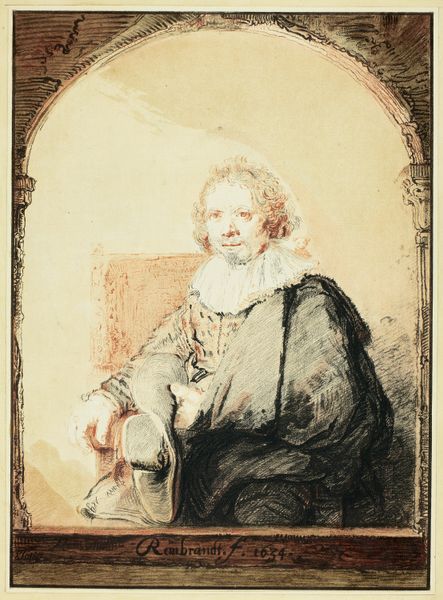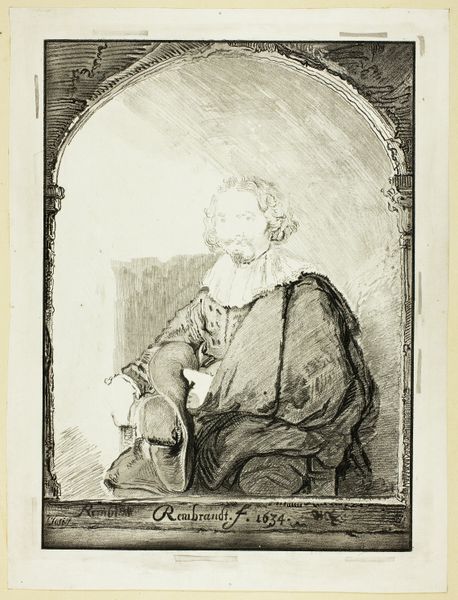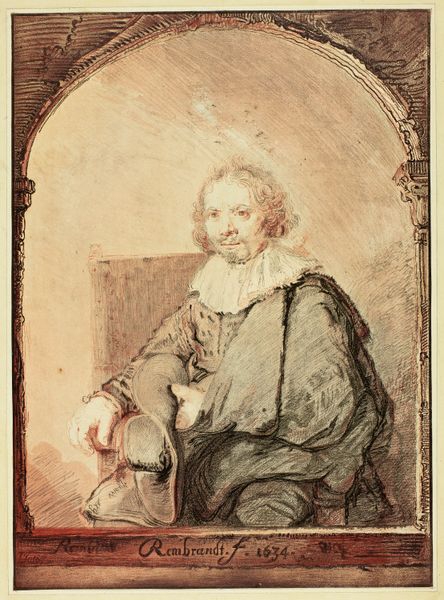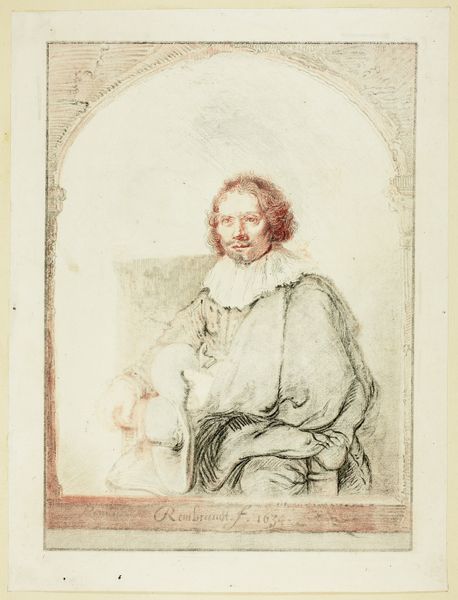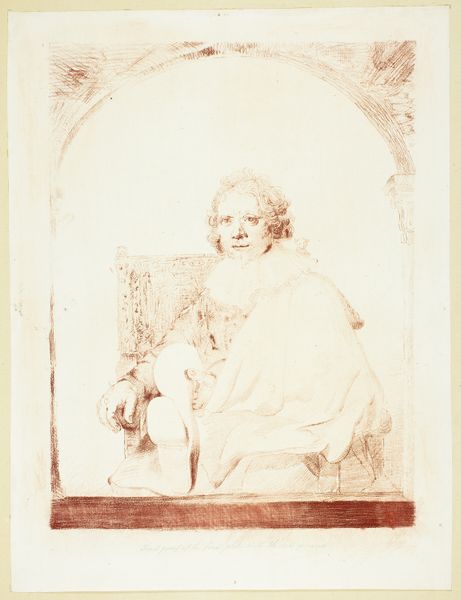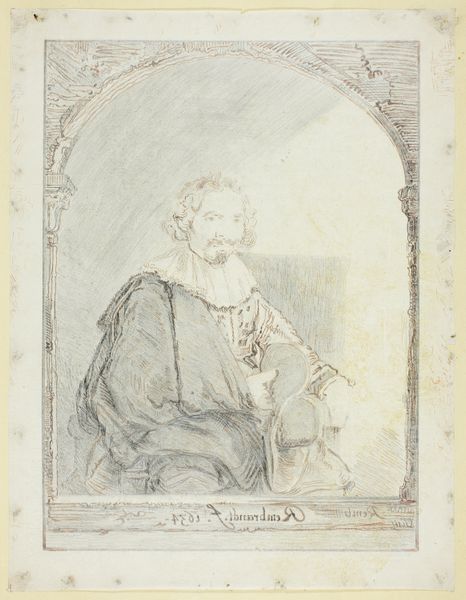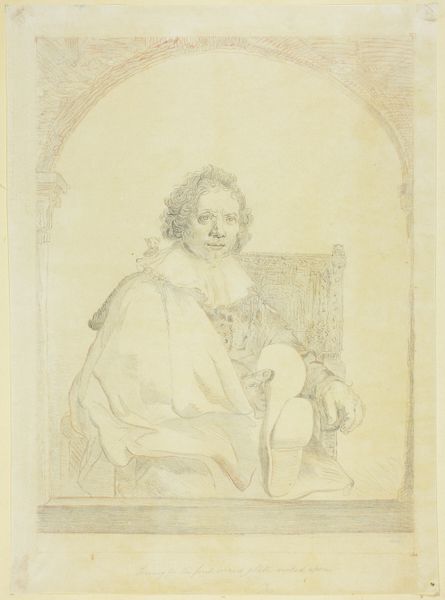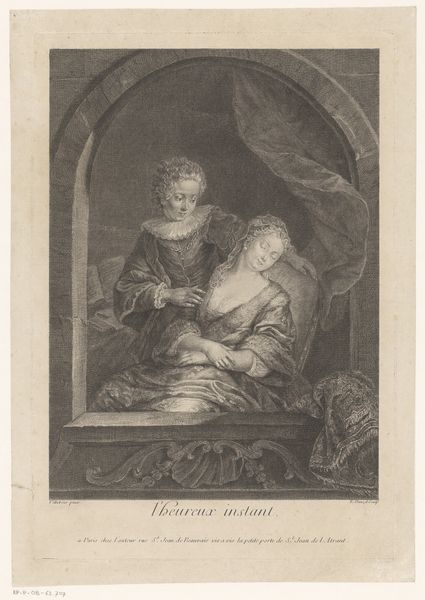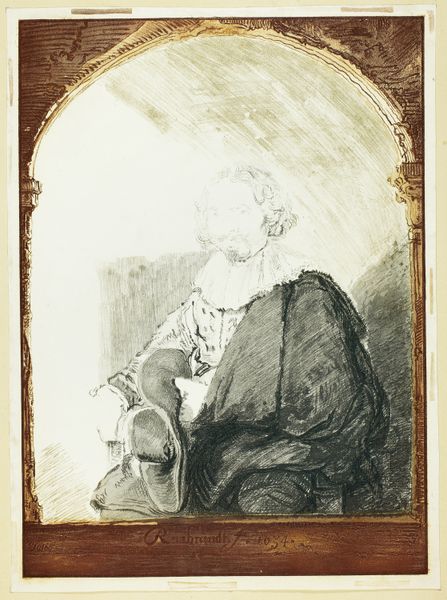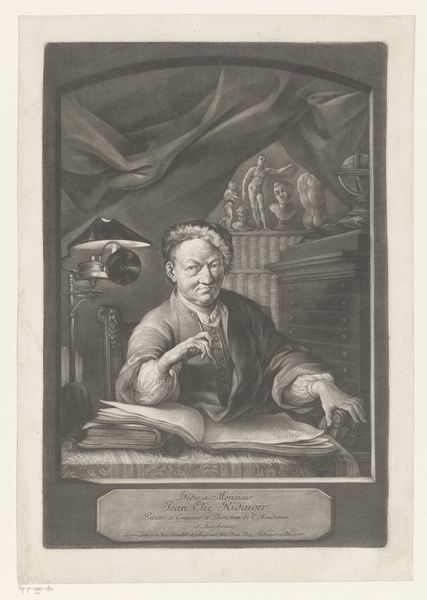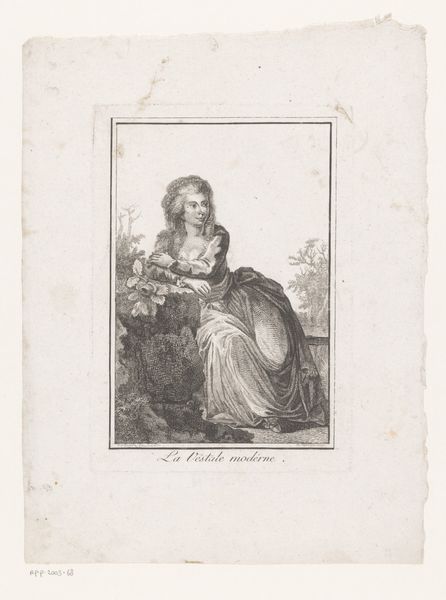
Portrait of a Man in an Arm Chair, from Collection d'imitations de Dessins d'après les Principaux Maîtres Hollandais et Flamands Possibly 1821
0:00
0:00
Dimensions: 377 × 275 mm (image); 430 × 327 mm (sheet); 505 × 395 mm (secondary support)
Copyright: Public Domain
Curator: This is a rather captivating portrait. Its somber tones are evocative. Editor: Indeed. Here we have "Portrait of a Man in an Arm Chair," believed to date possibly from 1821, part of the "Collection d'imitations de Dessins d'après les Principaux Maîtres Hollandais et Flamands." The artist, Christian Josi, masterfully employs etching to give it this feel. Look closely at the chair itself. Curator: What grabs my attention is the masterful way Josi balances light and shadow. Observe how the stark white collar contrasts sharply with the darker tones of the man's robe and the shaded background. It creates a focal point, drawing the eye immediately to his face. Editor: Yes, and that effect comes specifically from etching. A process relying heavily on acid to create lines and textures on a metal plate. Think about the socio-economic context here; Printmaking made art accessible. Multiple impressions could be made available and at relatively cheaper cost for distribution through the markets. Curator: I am struck by the composition, the subject centered within the frame, seemingly observing the viewer. There is undeniable tension. Editor: But consider how prints themselves challenge hierarchies. Traditionally drawings were often stepping stones, designs for "higher" art forms, such as paintings. But here we have an imitation of a drawing produced as an art object to be distributed in albums. Curator: I suppose it's this subtle complexity which keeps my gaze fixed. Editor: And it also keeps the markets flowing. The artist created this imitation in a series meant for middle class consumption and decoration. Curator: Well, whether one is concerned about its artistic merit or social relevance, I trust the artwork stays with them, perhaps long after they have left the gallery. Editor: Yes, and by examining its process and consumption, we come to better understand its value and contribution to both art history, culture, and industry.
Comments
No comments
Be the first to comment and join the conversation on the ultimate creative platform.
